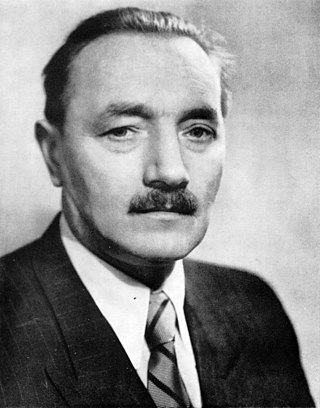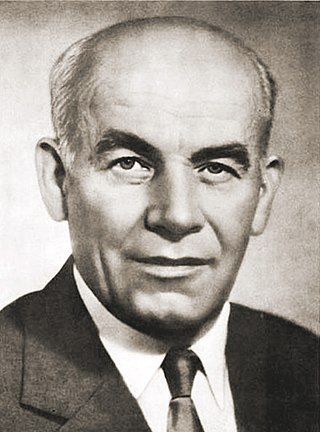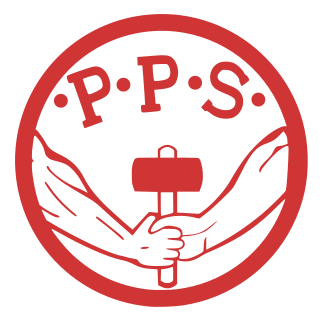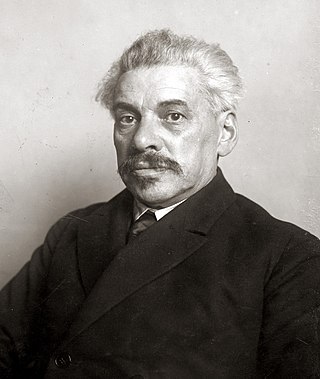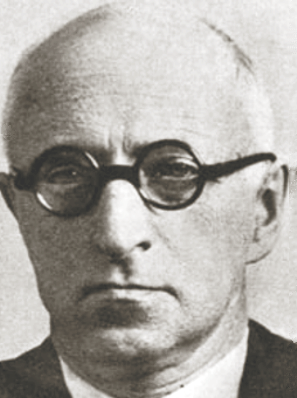This article has multiple issues. Please help improve it or discuss these issues on the talk page . (Learn how and when to remove these template messages)
|
Communist Party of Poland Komunistyczna Partia Polski | |
|---|---|
| Founded | 1918 |
| Dissolved | 1938 |
| Merger of | PPS–L SDKPiL |
| Succeeded by | PPR |
| Ideology | Communism Marxism–Leninism |
| Political position | Far-left |
| International affiliation | Communist International |
| Colours | Red |
The interwar Communist Party of Poland (Polish : Komunistyczna Partia Polski, KPP) was a communist party active in Poland during the Second Polish Republic. It resulted from a December 1918 merger of the Social Democracy of the Kingdom of Poland and Lithuania (SDKPiL) and the Polish Socialist Party – Left (PPS – Left) into the Communist Workers' Party of Poland (Komunistyczna Partia Robotnicza Polski, KPRP). [1] The communists were a small force in Polish politics. [2]
Contents
- Party history
- 1918–1921
- 1921–1926
- 1926–1938
- Policies and positions
- The Polish Workers' Party
- Election Results
- See also
- References
- Bibliography
The Communist Party of Poland (until 1925 the Communist Workers' Party of Poland) was an organization of the radical Left. Following the ideas of Rosa Luxemburg, [3] the party's aim was to create a Polish Socialist Republic, to be included in the planned Pan-European Commonwealth of Socialist States. The party did not support the formation of the Second Polish Republic in 1918 and supported the Bolsheviks (led by Vladimir Lenin) in the 1920 Polish–Soviet War. [1]
The views adhered to and promulgated by the leaders of the KPP (Maria Koszutska, Adolf Warski, Maksymilian Horwitz, and Edward Próchniak) led to the party's difficult relationship with Stalin. [4] The Communist International (Comintern) condemned the KPP for its support of Józef Piłsudski's May Coup of 1926 (the party's "May error"). [5] From 1933, the KPP was increasingly treated with suspicion by the Comintern. The party structures were seen as compromised due to infiltration by agents of the Polish military intelligence. Some of the party leaders, falsely accused of being such agents, were subsequently executed in the Soviet Union. In 1935 and 1936, the KPP undertook a formation of a unified worker and peasant front in Poland and was then subjected to further persecutions by the Comintern, which also arbitrarily accused the Polish communists of harboring Trotskyists elements in their ranks. The apogee of the Moscow-held prosecutions, aimed at eradicating the various "deviations" and ending usually in death sentences, took place in 1937–38, with the last executions carried out in 1940.
KPP members were persecuted and often imprisoned by the Polish Sanation regime, which turned out to likely save the lives of a number of future Polish communist leaders, including Bolesław Bierut, Władysław Gomułka, Alfred Lampe, Edward Ochab, Stefan Jędrychowski, and Aleksander Zawadzki (among former KPP members transferred during World War II from the Soviet Union to Poland for conspiratorial work were Mieczysław Moczar and Marian Spychalski). During the Great Purge, seventy members and candidate members of the party's central committee fled or were brought to the Soviet Union and were shot there, along with many other activists (almost all prominent Polish communists were murdered or sent to labor camps). The Comintern, in reality directed by Stalin, in 1938 had the party dissolved and liquidated. [6] [7] [8] [9]






